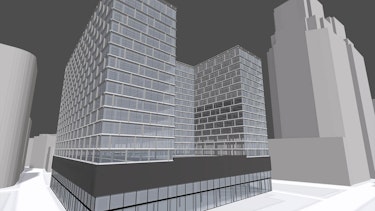Artificial intelligence (AI) is transforming the landscape of architecture and design, offering innovative solutions that enhance creativity, efficiency, and precision. As architects and designers increasingly embrace AI, they find themselves equipped with tools that can significantly streamline the design process, improve decision-making, and foster a deeper connection between the conceptual and the practical. This article explores some of the leading AI tools available today, focusing on how they are reshaping the architectural profession.
1. NVIDIA Omniverse
NVIDIA Omniverse is a powerful AI-driven platform that facilitates real-time collaboration and simulation. It is particularly valuable for architects who work in teams spread across different locations. Omniverse allows multiple users to collaborate on the same project simultaneously, updating and refining models in real-time. Its AI capabilities enable predictive design, where the software can suggest improvements or alterations based on predefined parameters. This tool is not only about enhancing collaboration but also about ensuring that the design process is fluid, dynamic, and responsive to real-time data and feedback.

Credit: NVIDIA
2. Spacemaker AI
Spacemaker AI is a tool designed to optimize urban design and architecture. It uses AI to analyze vast amounts of data related to site conditions, zoning regulations, environmental impact, and more. The software then generates design proposals that optimize the use of space, sunlight, wind patterns, and other environmental factors. Spacemaker AI is particularly useful for architects working on urban planning and large-scale projects, where the efficient use of space and resources is crucial. By simulating different scenarios, architects can make more informed decisions that balance aesthetic, functional, and environmental considerations.

Credit: ArchDaily
3. TestFit
TestFit is an AI-driven tool that focuses on the feasibility and speed of creating building layouts. It uses algorithms to generate building configurations based on inputs like site dimensions, zoning rules, and developer requirements. The tool provides real-time feedback on the viability of different layouts, allowing architects to quickly iterate and optimize their designs. TestFit is particularly effective in the early stages of design, where rapid prototyping and exploration of multiple options are essential. By automating the generation of floor plans and site layouts, it frees up architects to focus on more creative aspects of the design process.

Credit: TestFit
4. Hypar
Hypar is a generative design platform that allows architects to create custom workflows using AI. The platform is built on a modular system where users can develop their own design algorithms or use existing ones to generate design solutions. Hypar is highly flexible, enabling architects to tackle a wide range of design challenges, from structural engineering to environmental analysis. The AI-driven nature of Hypar allows for the exploration of complex design scenarios that would be difficult or time-consuming to evaluate manually. It is particularly valuable in projects that require a high degree of customization and precision.

Credit: AEC Magazine
5. Archistar
Archistar is an AI-powered tool that assists architects and developers in site analysis and feasibility studies. It uses machine learning algorithms to analyze site conditions, zoning regulations, and market data, providing insights that can guide the design process. Archistar can generate multiple design options that maximize the potential of a site while complying with local regulations. This tool is particularly useful in the early stages of a project, where understanding the constraints and opportunities of a site is critical. By providing data-driven insights, Archistar enables architects to make more informed decisions and reduce the risk of costly redesigns.

Credit: Archistar
6. Delve by Sidewalk Labs
Delve is an AI-powered tool developed by Sidewalk Labs that focuses on optimizing urban planning and development. It uses machine learning to analyze various aspects of a project, such as land use, transportation, and community impact, to generate design solutions that maximize the potential of a development site. Delve’s AI capabilities allow for the exploration of multiple scenarios, enabling architects and planners to identify the best possible outcomes for a given project. This tool is particularly useful in large-scale urban developments, where the interplay of different factors can significantly impact the success of the project.

Credit: Dezeen
The advent of AI tools in architecture marks the beginning of a new era, where the boundaries of creativity and functionality are constantly being pushed. These tools are not just about making the design process more efficient; they are about enhancing the ability of architects to tell visual stories, to create spaces that resonate with their users on both an aesthetic and functional level. AI allows architects to explore new dimensions of design, to experiment with forms and structures that were previously unimaginable, and to do so with a level of precision and insight that was once the domain of science fiction.
As AI continues to evolve, it will undoubtedly play an even more central role in architecture and design. The tools we have today are just the beginning. Future developments will likely see AI integrated even more deeply into the design process, from the initial concept stages to the final construction. Architects who embrace these tools will find themselves at the forefront of a revolution, leading the way in creating the buildings and cities of tomorrow.
